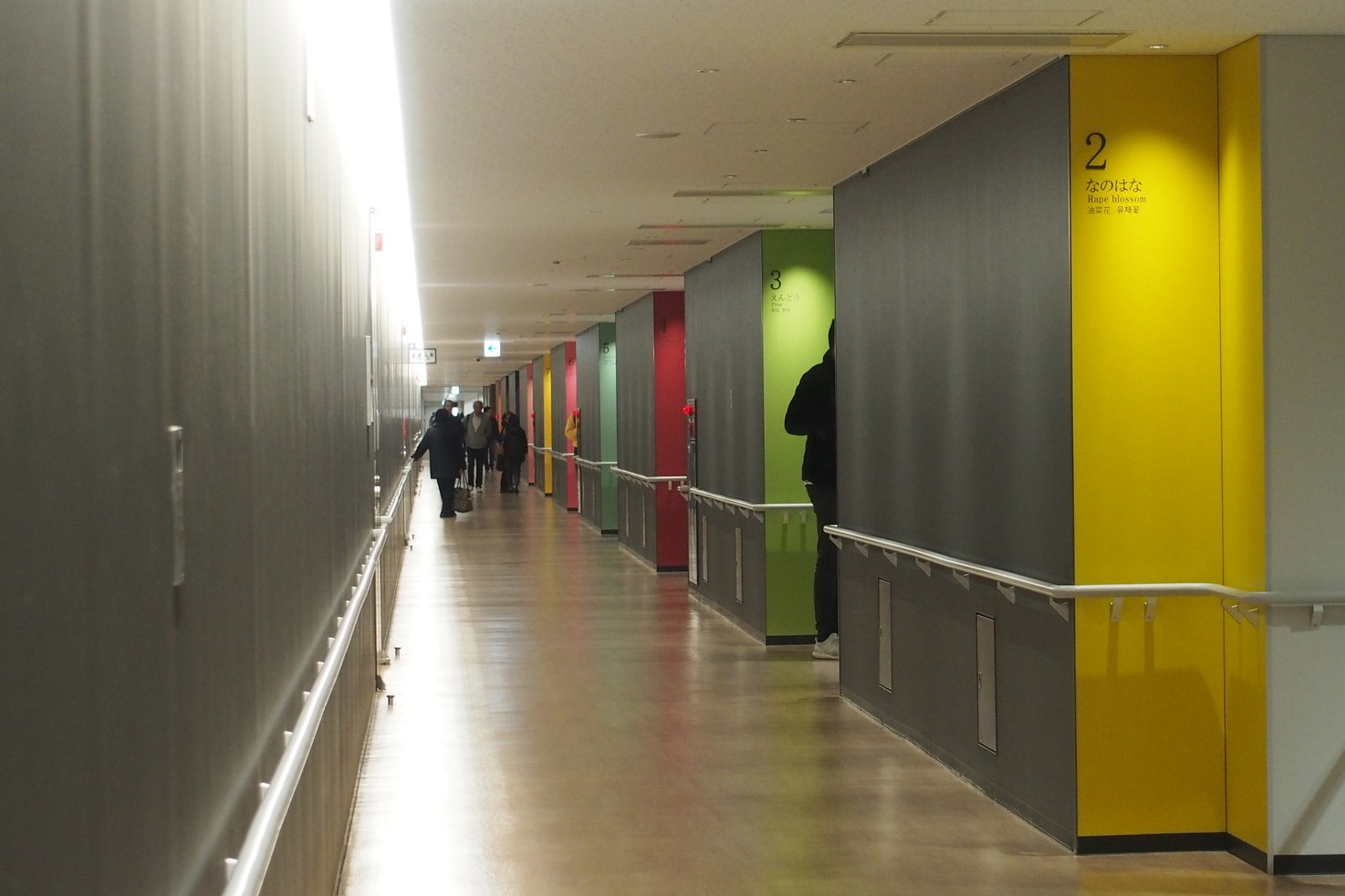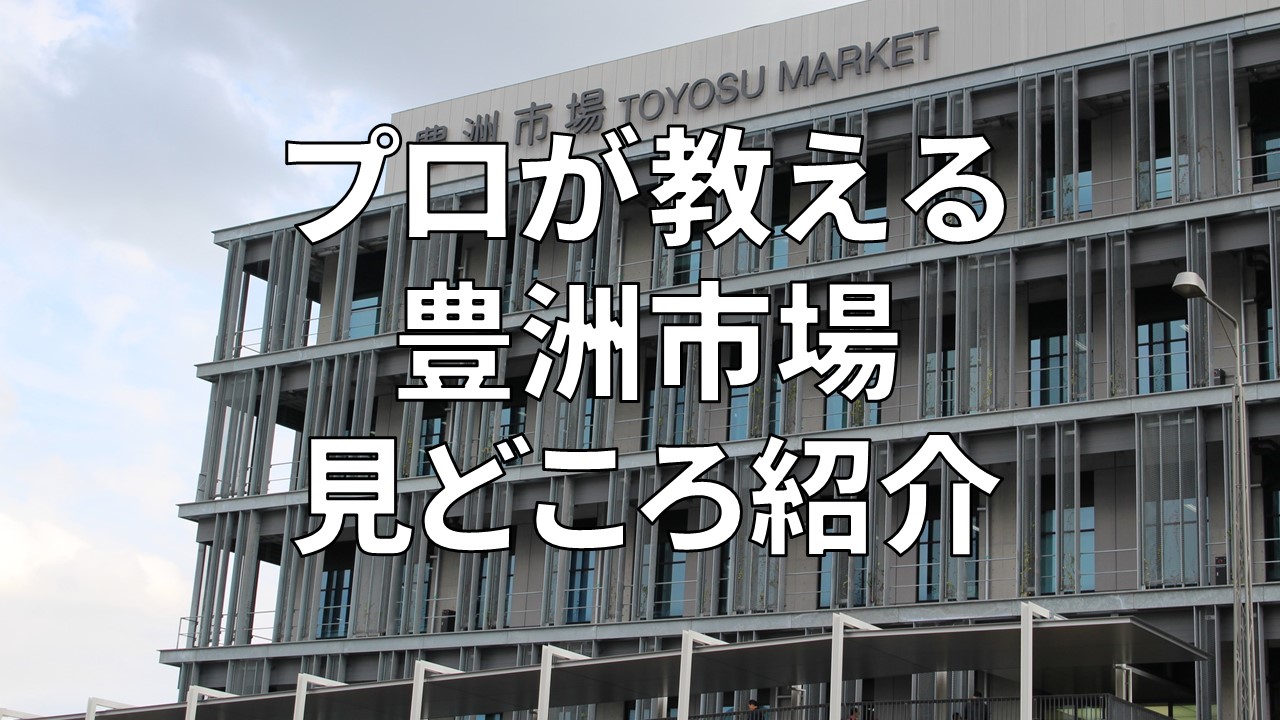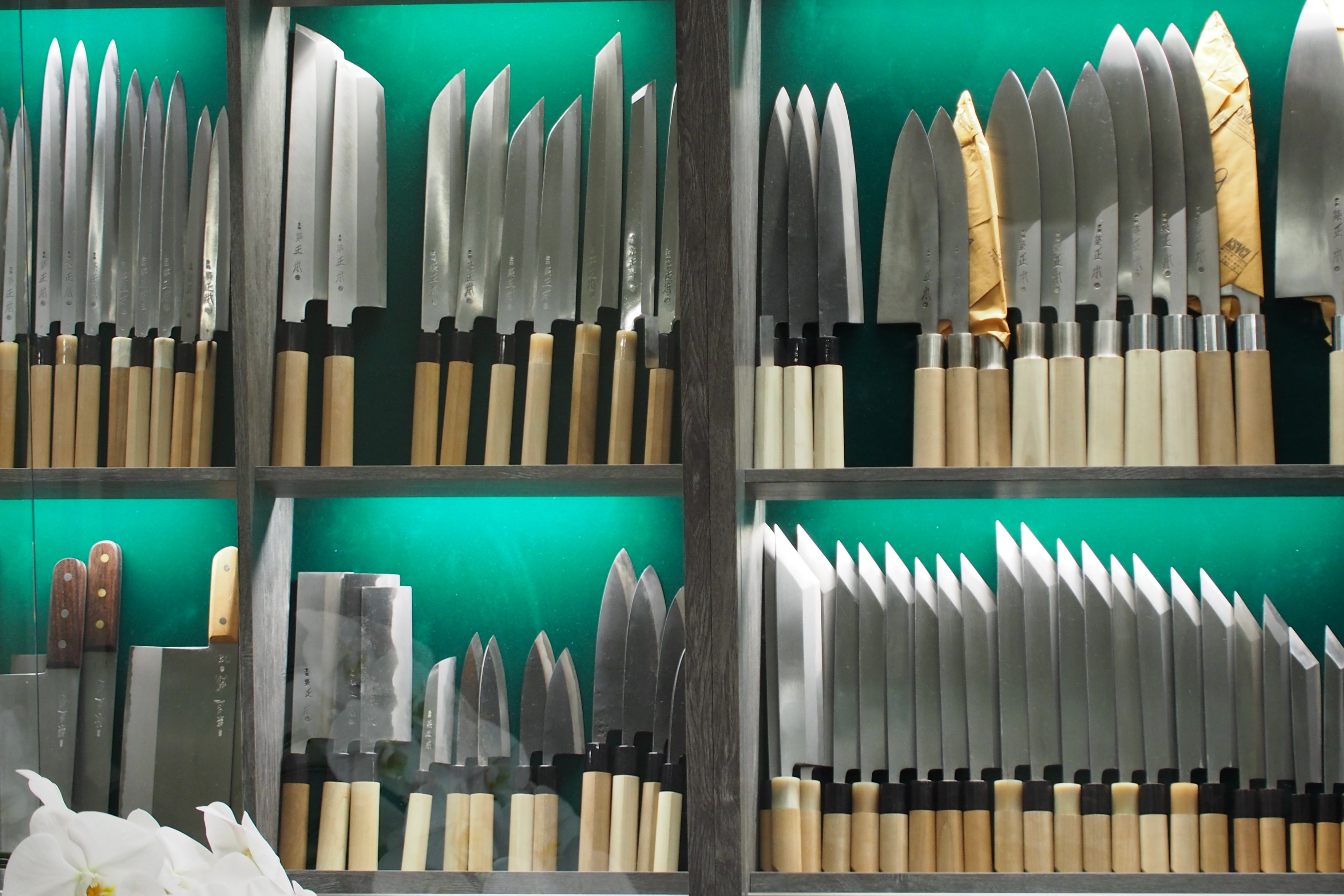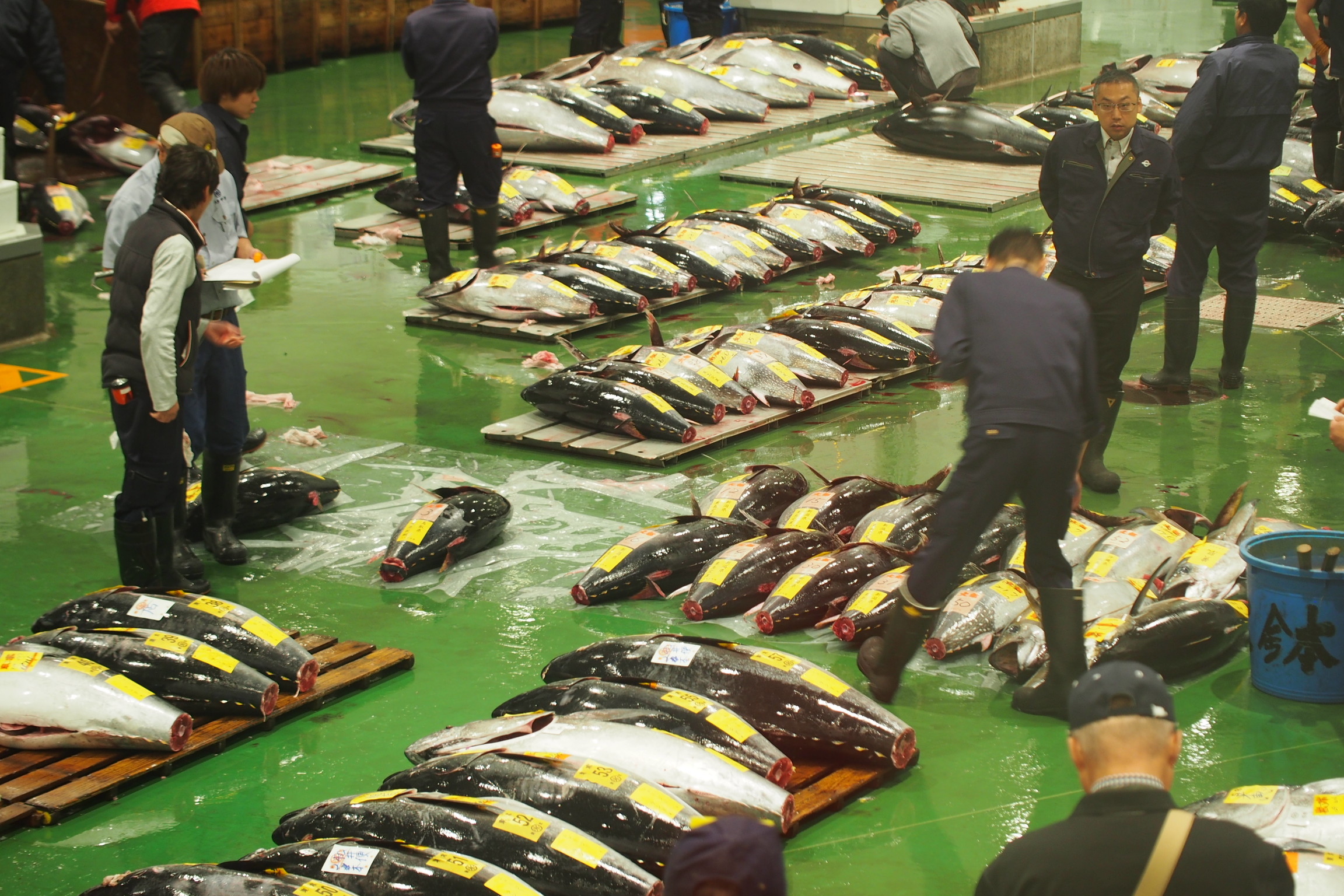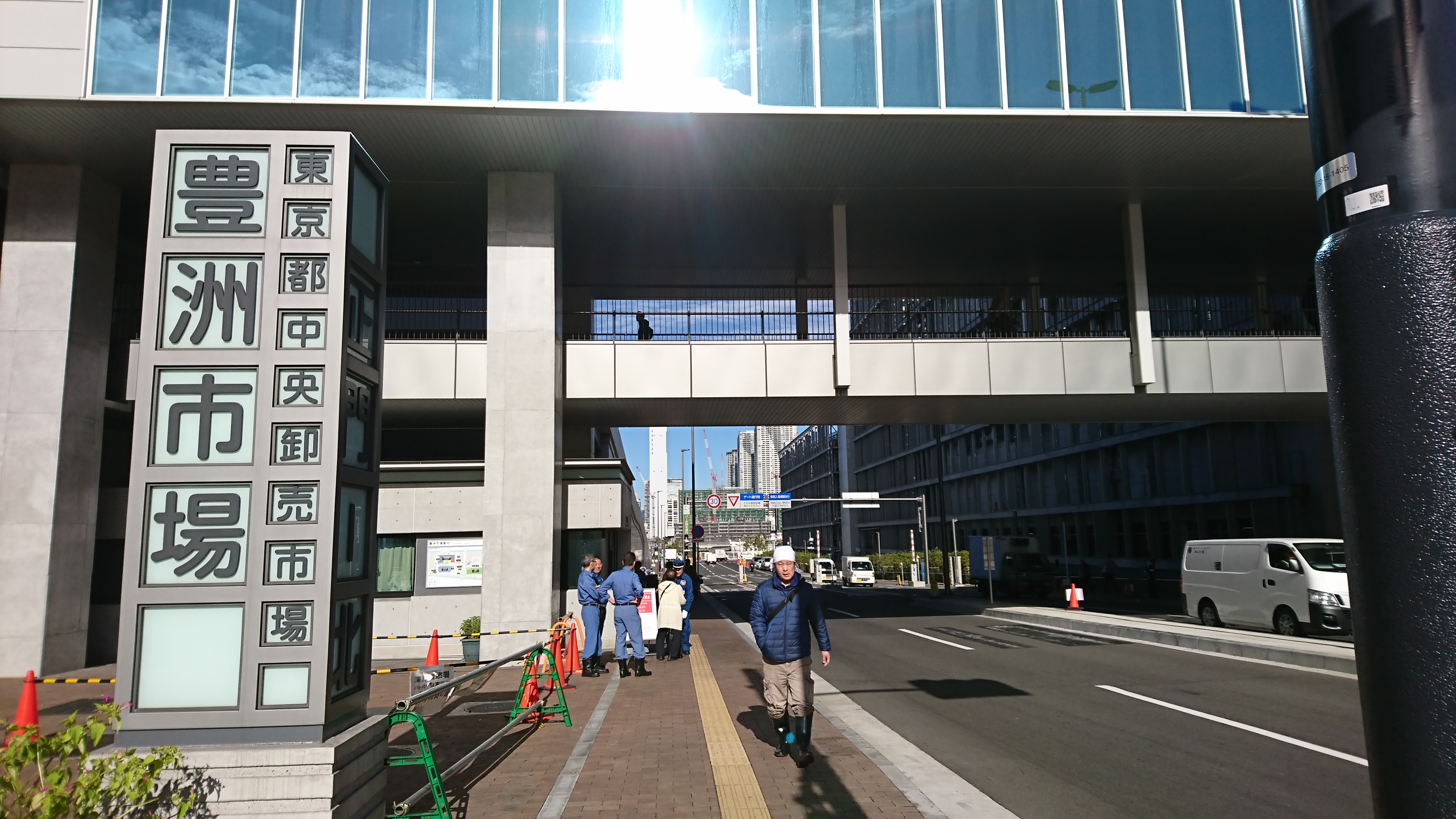- 1 The number of visitors to the Toyosu market keeps growing!
- 2 The Toyosu Market also has a [fruit and vegetable department] that handles a large volume of fruits and vegetables every day.
- 3 How to visit the Toyosu Market “Fruits and Vegetables Building” and access
- 4 I was surprised when I entered. The fruit and vegetable building has a colorful and kawaii interior!
- 5 The fruit and vegetable building is very beautiful. It’s like a next generation market!
- 6 Learn about the history of the fruit and vegetable market through panels.
- 7 Introduction of vegetables and fruits gathered at the Toyosu Market and the people who work there
- 8 I recommend it because it’s less crowded and you can take your time touring!
The number of visitors to the Toyosu market keeps growing!
The Toyosu Market was relocated from Tsukiji Market and newly opened in October 2018.
Since its opening, the market has been bustling with tourists and social studies visitors every day.
The Toyosu Market also has a [fruit and vegetable department] that handles a large volume of fruits and vegetables every day.
The Toyosu Market has the function of collecting fruits and vegetables from all over Japan and distributing them to supermarkets, grocery stores, and restaurants in the Tokyo area.
Fruits and vegetables are collectively called “fruits and vegetables (seikatsu).
The Toyosu Market may have a strong image of fish, but the fruit and vegetable department is also very attractive!
In this article, we will introduce some of the highlights of the Fruits and Vegetables Building and points of interest for a tour. The Fruits and Vegetables Building is located in the 5th district of Toyosu Market.
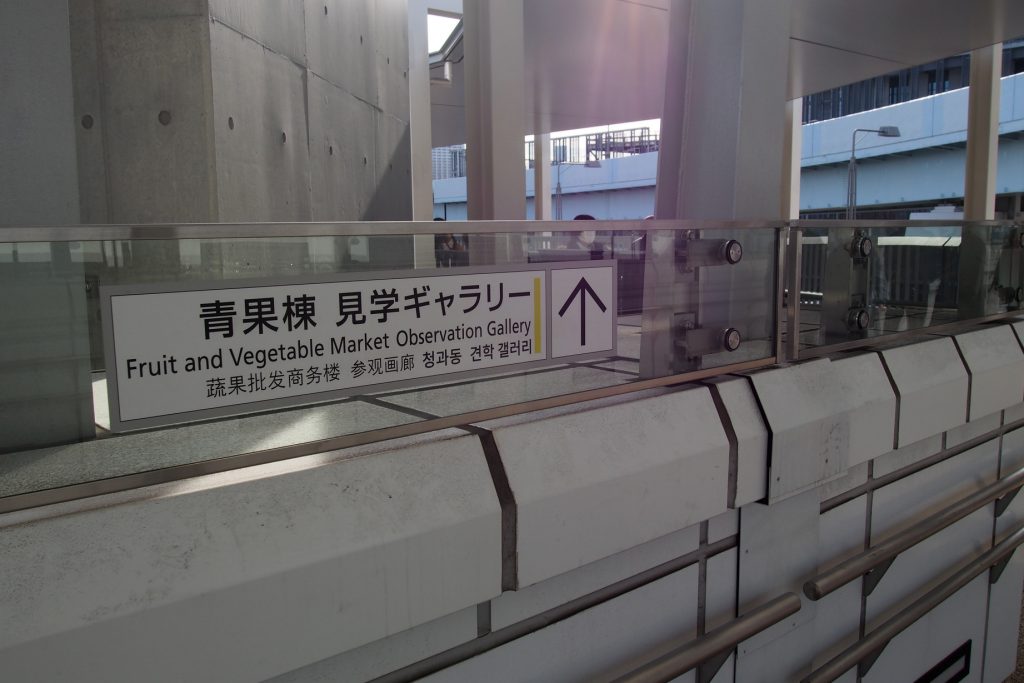
How to visit the Toyosu Market “Fruits and Vegetables Building” and access
The Yurikamome Line “Shijo-mae” station is convenient for visiting the Toyosu Market.
After exiting the ticket gate, follow the signboard and turn left.
The market is covered with a roof, so you can visit without getting wet even on a rainy day. This is another great point!
The market is closed on certain days.
Before coming to visit, be sure to check the days when the market is closed.
The market is open for tours from 5:00 am to 5:00 pm.
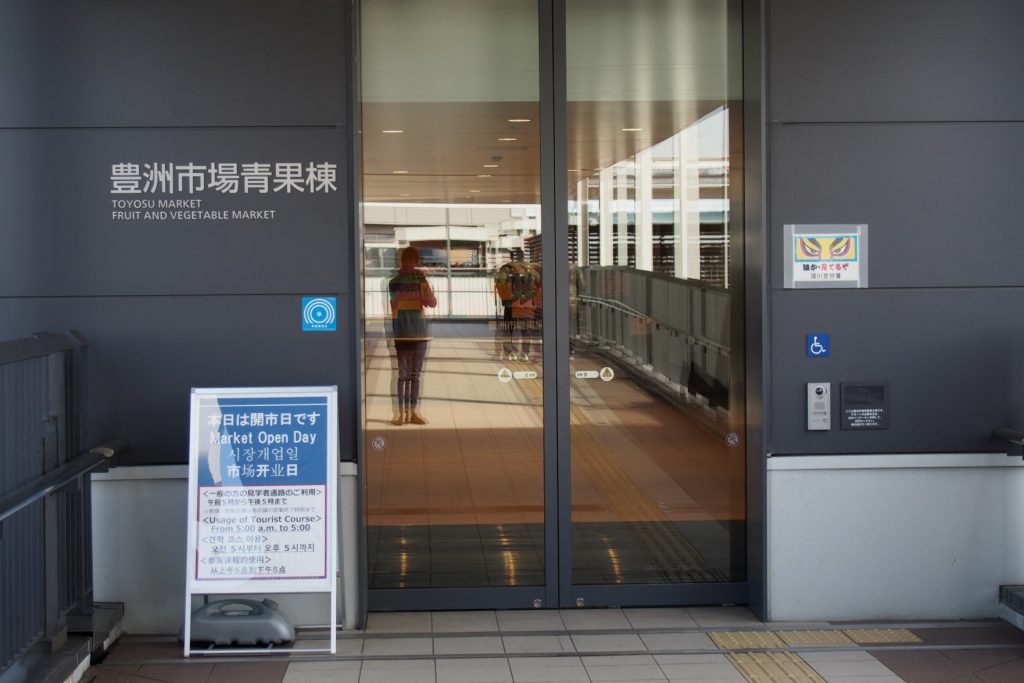
I was surprised when I entered. The fruit and vegetable building has a colorful and kawaii interior!
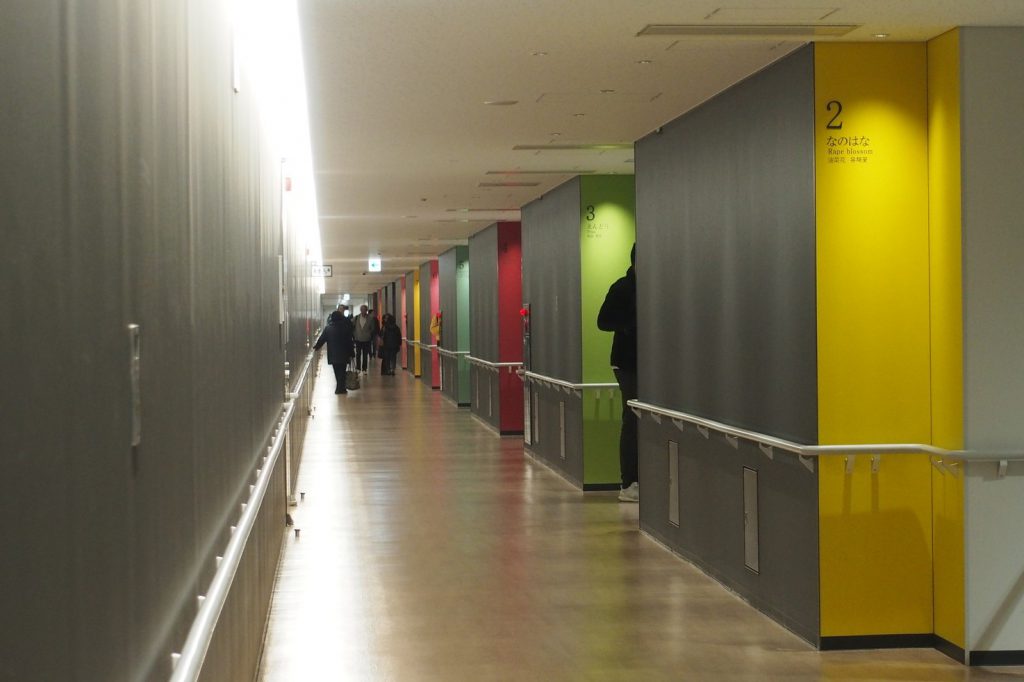
Entering the produce building and proceeding down the visitor route, I was amazed!
What a colorful and beautiful interior!
The visitor aisles are colored for each location and are numbered and labeled with the name of the vegetable or fruit.

They are numbered from 1 to 12.
1:Shungiku, 2:Nanohana, 3:Endo, 4:Ichigo.
I personally like the fact that they are all in hiragana because it is cute.
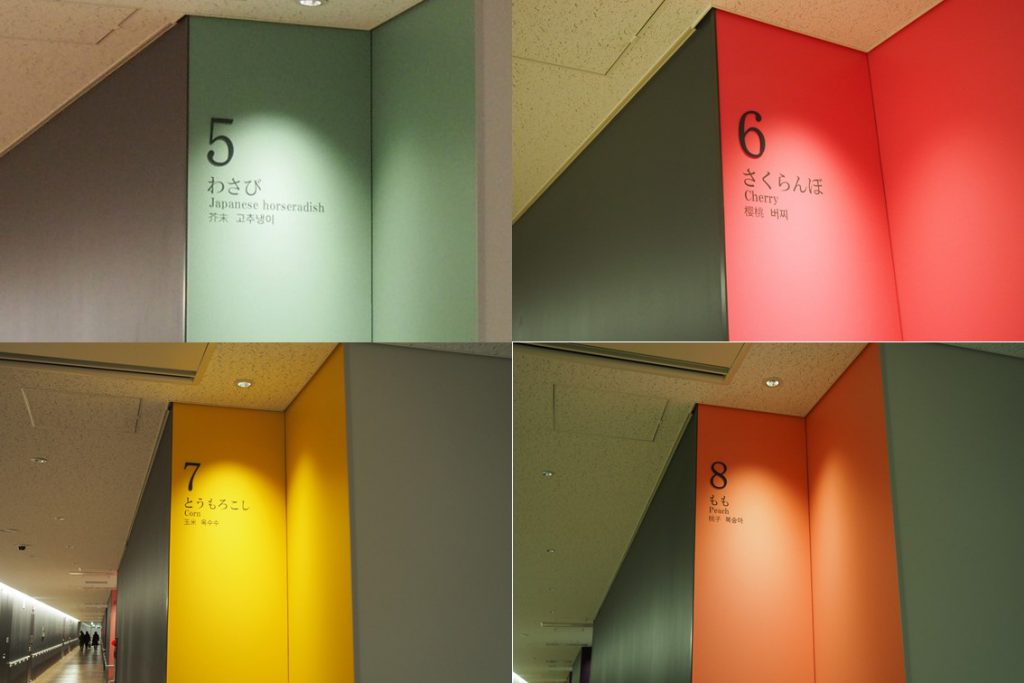
5:わさび、6:さくらんぼ、7:とうもろこし、8:もも。
ちなみに色や青果の種類と、その名前が付けられている場所に関係があるのかはわかりません。
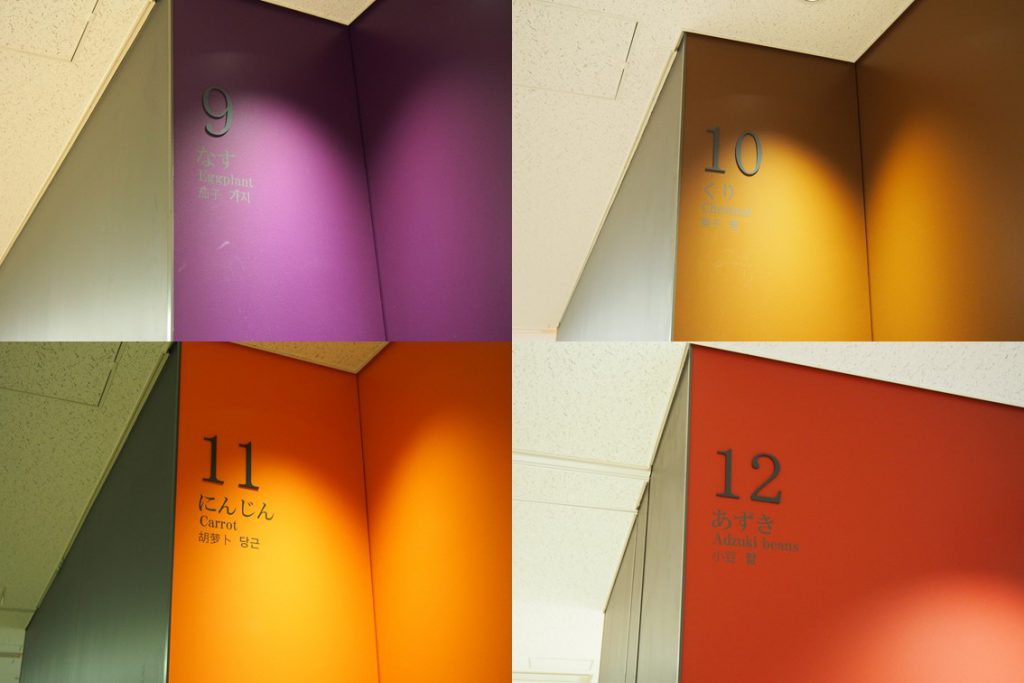
9: eggplant, 10: chestnuts, 11: carrots, 12: adzuki beans.
The produce wing of the Toyosu Market also offers beans.
The fruit and vegetable building is very beautiful. It’s like a next generation market!
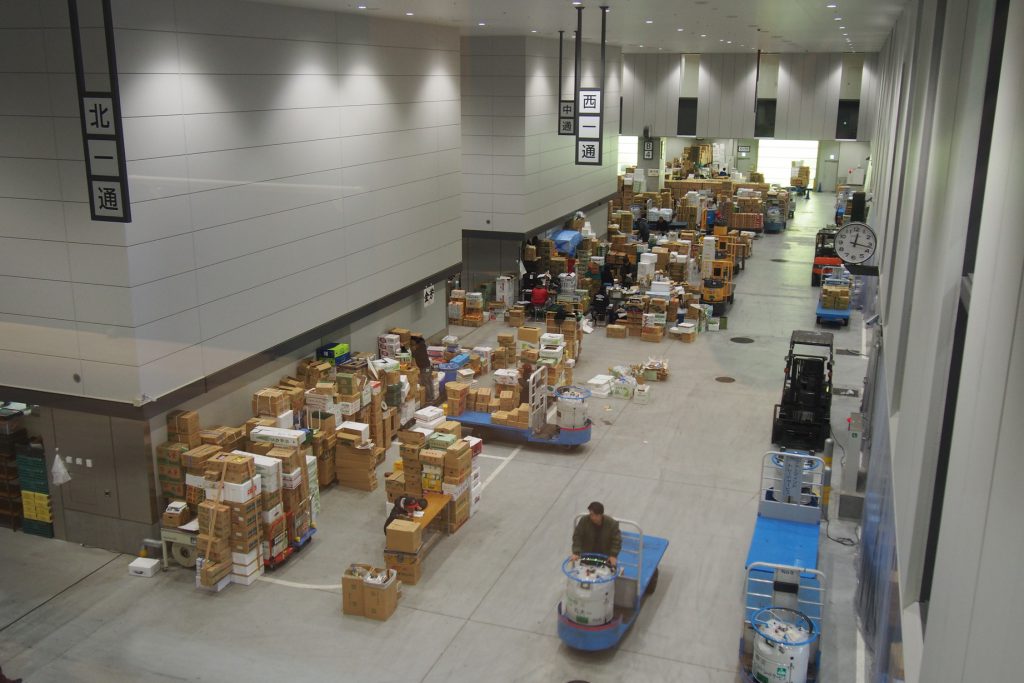
Visitors can see the wholesale hall of fruits and vegetables through the visitors’ passageway.
I usually go to the fishery building, but it is totally different compared to the fishery building.
The fact that they do not handle water is probably a big factor, but the fruit and vegetable building is very clean. It is bright and clean!

Learn about the history of the fruit and vegetable market through panels.
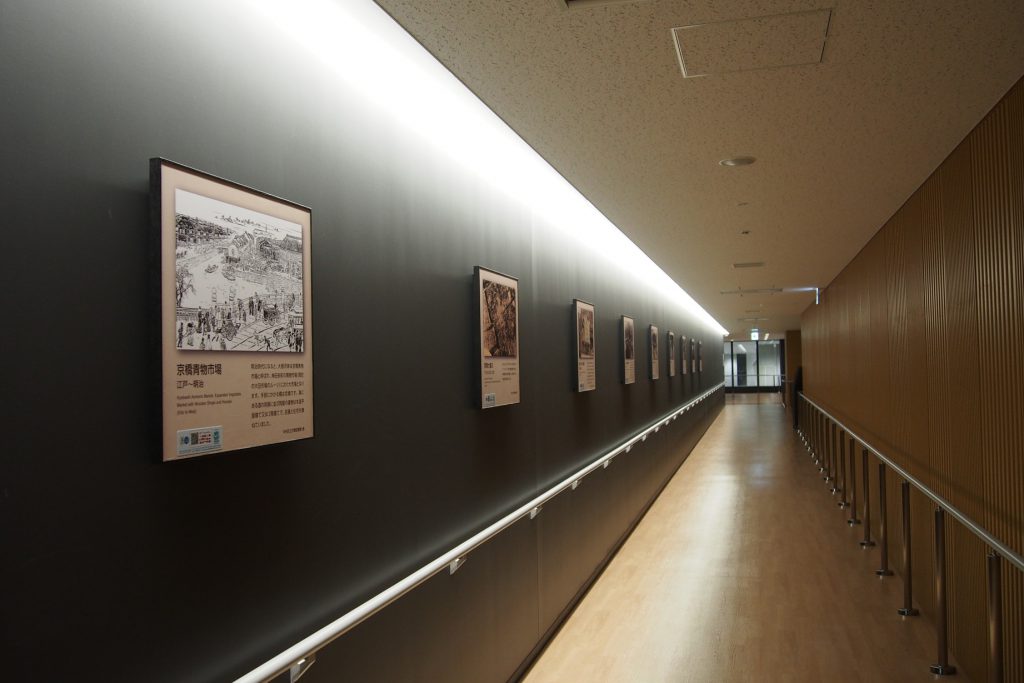
As you continue to the back of the building, you will find a panel displaying the history of the fruit and vegetable market.
According to the explanatory panel, the beginning of the Tokyo fruit and vegetable market is said to have been a produce market established in Sukiyabashi (around present-day Yurakucho) by a few people with approval.
Later, it was moved to the north bank of the Kyobashi River, where water transportation was well developed. Since this market received many shipments of daikon radishes, it came to be called Daikogishi (daikon river bank).
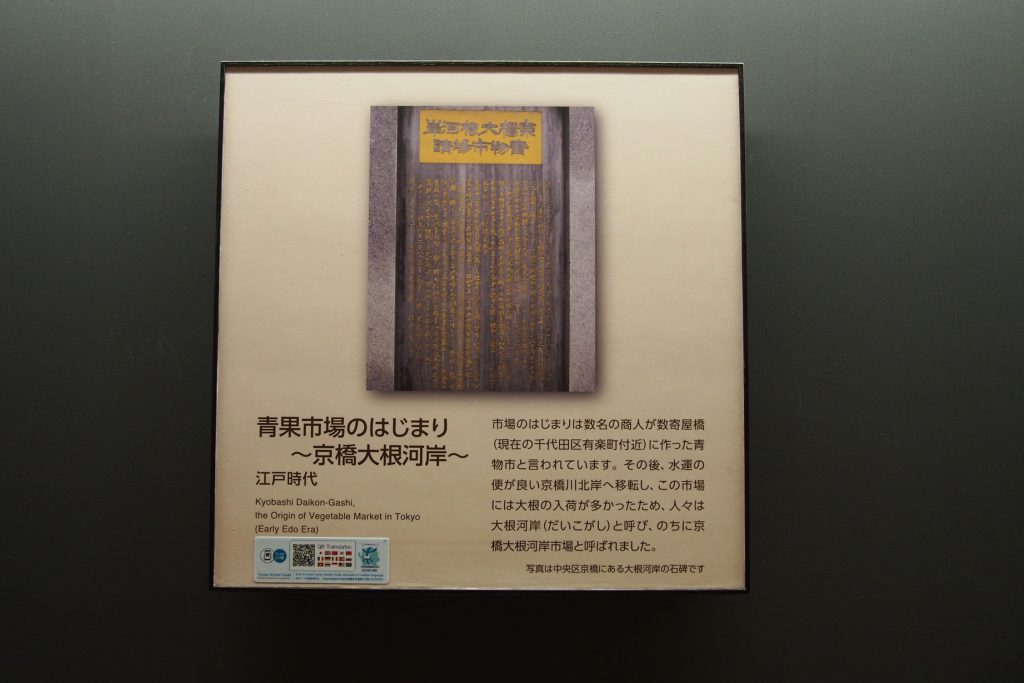
In addition, there are about 10 other exhibits, including valuable photographs taken at the time of the Great Kanto Earthquake and after the end of the war.
What’s so great about the “Automated 3-D Low-Temperature Warehouse”?
On this aisle is the “Automated Multi-Level Low-Temperature Warehouse.
What a surprise, the fruit and vegetable building at Toyosu Market has an automated warehouse!
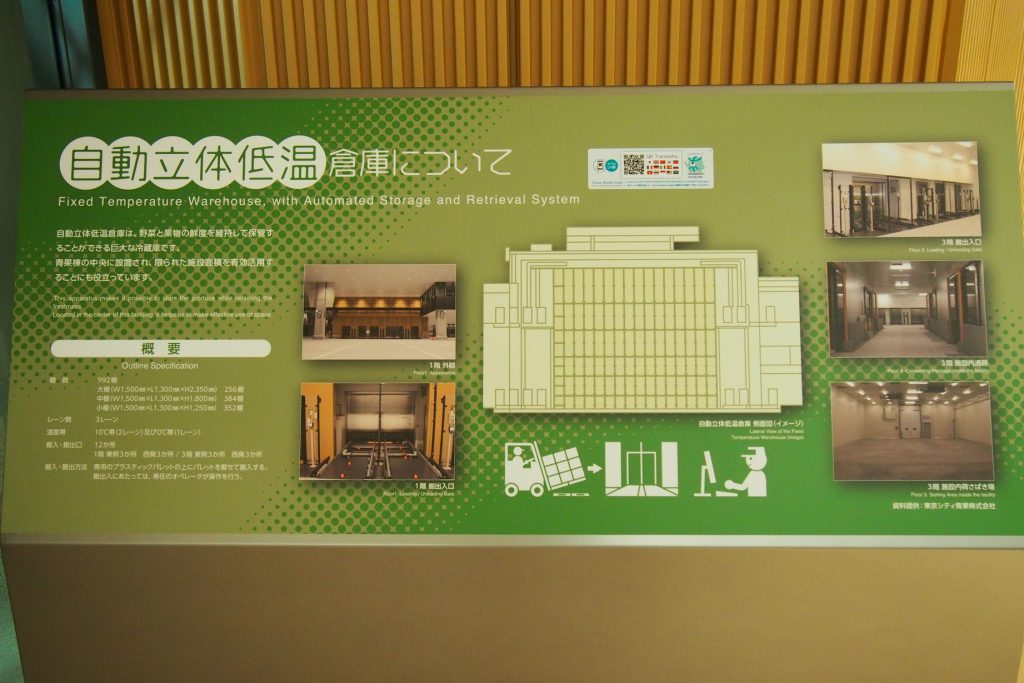
The limited facility area is utilized more effectively, and the products are stored in low-temperature conditions to maintain freshness.
The loading and unloading is operated by a full-time operator. Very cool.
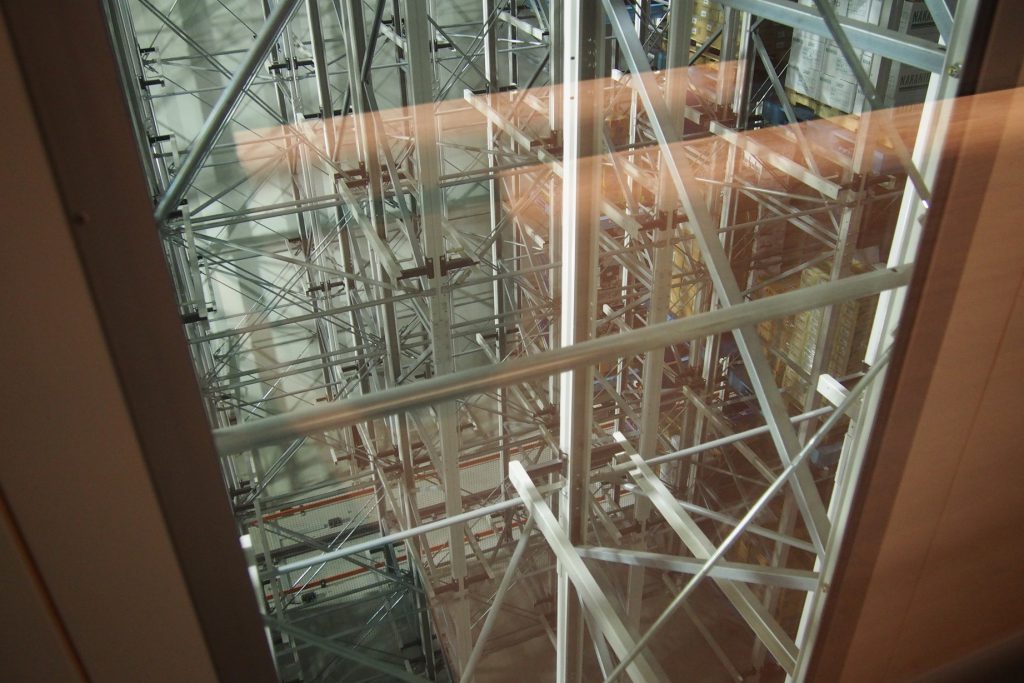
Introduction of vegetables and fruits gathered at the Toyosu Market and the people who work there
From the innermost area, visitors can tour the wholesale fruit and vegetable market.
Since we visited in the afternoon, there were almost no people in the wholesale market, but it is sure to be lively in the morning.
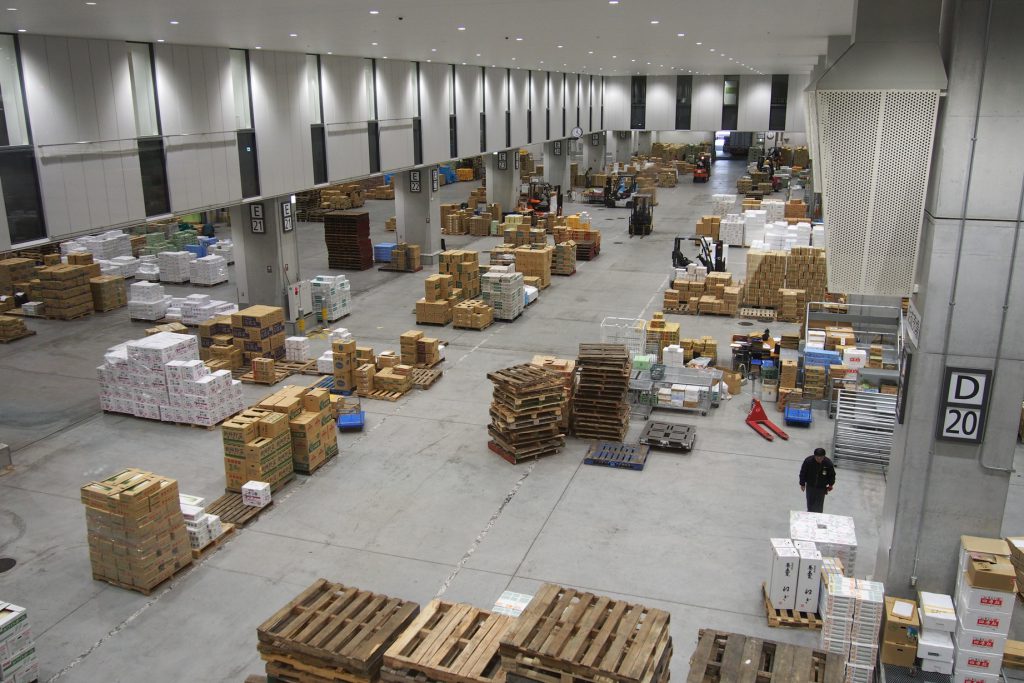
In addition, a miniature model of the 5th district and panels introducing fruits and vegetables handled in the produce section are on display.
In terms of volume handled at the Toyosu Market, mandarin oranges rank first among fruits, and cabbage ranks first among vegetables.

I recommend it because it’s less crowded and you can take your time touring!
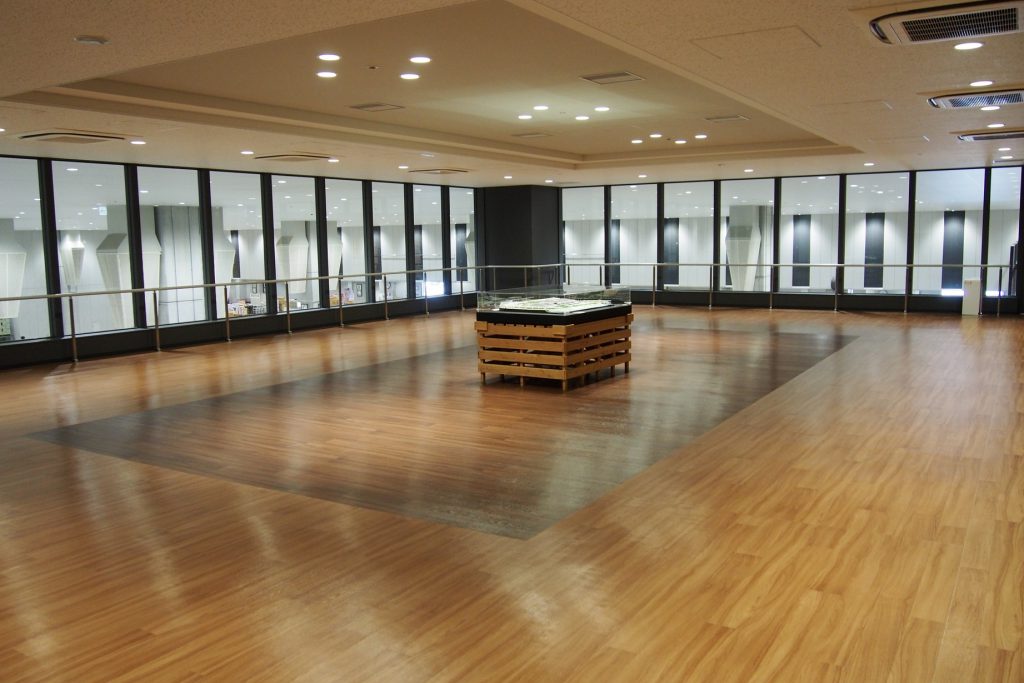
Thank you for reading this far.
Compared to the 6th district, the 5th district, where the produce building is located, was less crowded, but on the contrary, I was able to tour the market at a leisurely pace and felt comfortable.
According to a friend of mine who works as a produce broker, Toyosu Market is very comfortable and easy to work in. I was a little envious!
